Redis installation guide covers Windows, Linux, Docker
This article implements the function
Redis installation tutorial on windows
Redis installation on centos
Use docker to install Redis
Implementation environment
##window installation redis tutorial
- ##centos7.3
- docker
- VM virtual machine
The version of redis on window is up to 3.2
Download address:
You will see after entering Go to such a page, click Download
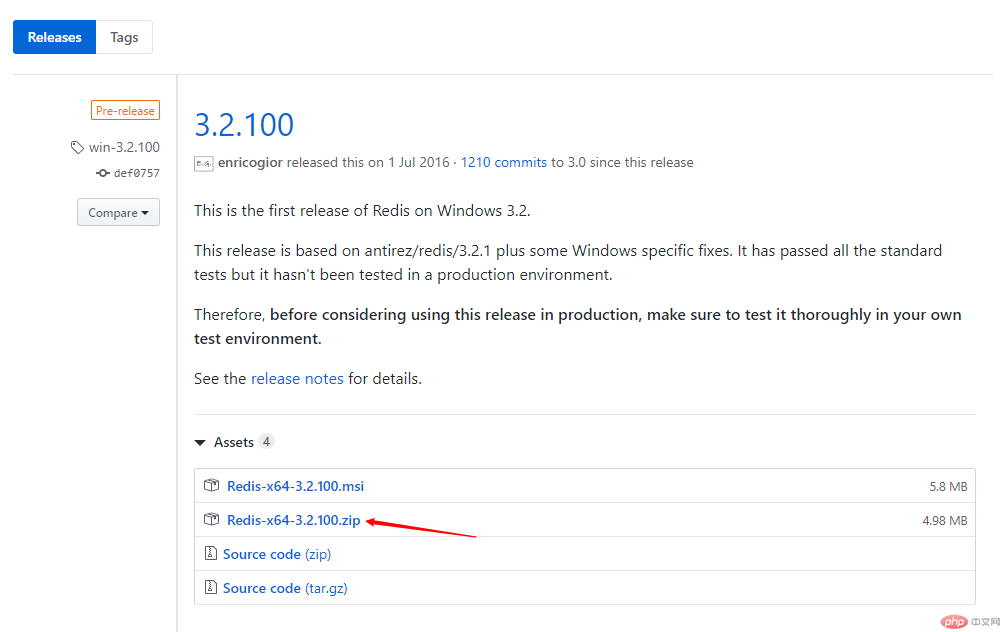 # and then unzip the downloaded file and put it under your own drive letter
# and then unzip the downloaded file and put it under your own drive letter
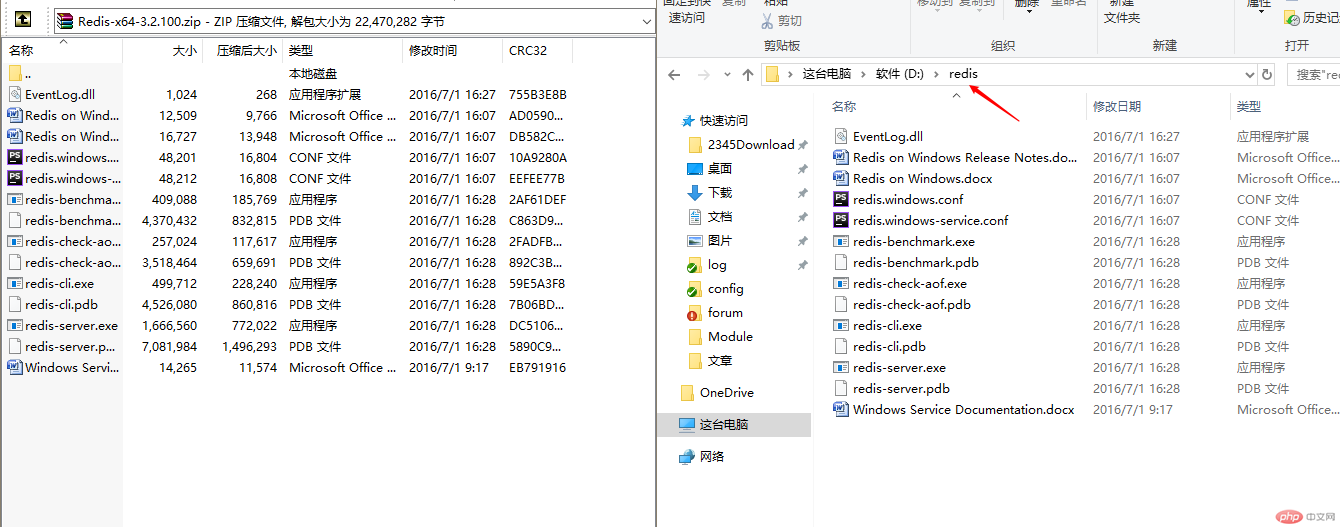 Click redis-server to start the redis service, and then open a terminal to use redis
Click redis-server to start the redis service, and then open a terminal to use redis
 window installation of redis is very simple, you can do it during the learning process Use window to learn, but the actual work is still based on Linux.
window installation of redis is very simple, you can do it during the learning process Use window to learn, but the actual work is still based on Linux.
linux installation Redis
On Linux, you can use yum to install, or you can use source code to install. Here Kaka uses compiled installation. The installation version is 4.0
Download the redis installation package
wgethttp://download.redis.io/releases/redis-4.0.8.tar.gz
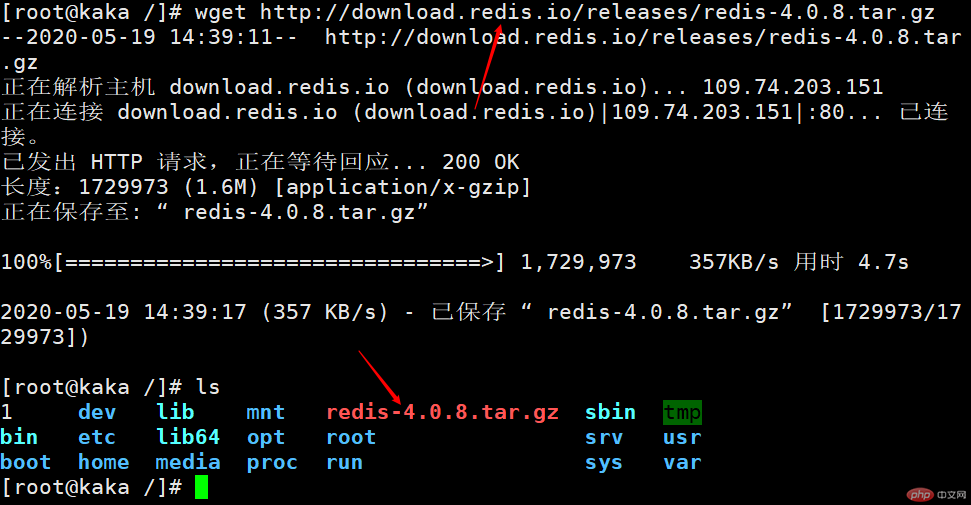 Unzip the installation package
Unzip the installation package

cd redis-4.0.8Execute make
Then Move redis-4.0.8 to /usr/local
mv redis-4.0.8 /usr/local
 Modify redis.conf configuration
Modify redis.conf configuration
Set password
##Comment bind 127.0.0.1 (this can only be connected using the local machine, so it needs to be commented out)
 The default is non-daemon mode
The default is non-daemon mode
Exit after completing the above operations
When using redis, remember to enter a password. If you don’t want to enter a password, you can do the above operation without setting a password
The above is the installation of redis on linux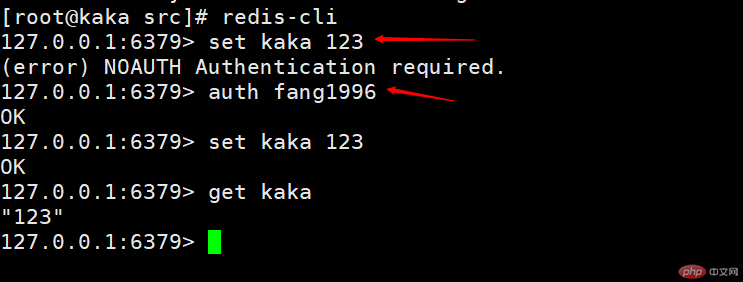
Here I’ll talk about turning off the redis service. This is not turned off because the password is set, so we need to add the password to turn off the redis service
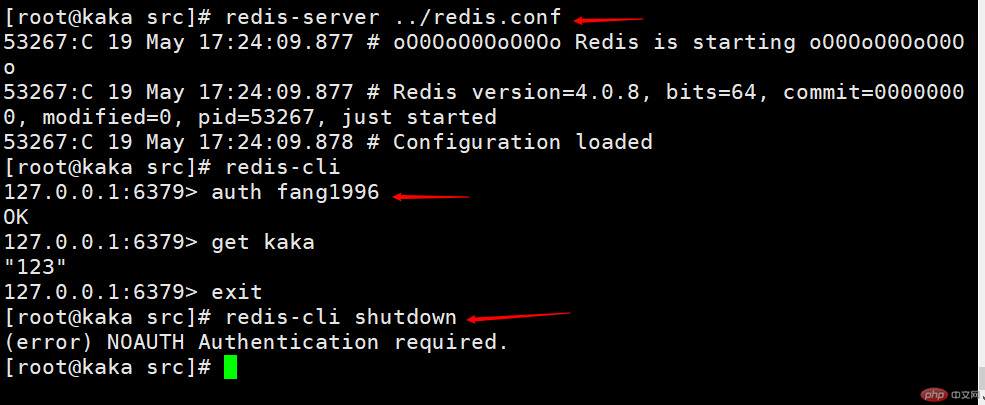
You can see that there is a redis process running now

The correct shutdown method redis-cli -a fang1996 shutdown

Docker installation redis
Prerequisite: You have docker on centos
First pull the redis4.0 image
docker pull redis:4.0
View the image docker image ls
At this time the redis image has been pulled down

I have defined a network here 172.10.0.0/16
Create redis container: docker run -itd --name redis --net mynetwork -p 6380:6379 --ip 172.10.0.2 redis:4.0
Enter docker in the redis container exec -it redis /bin/bash
There is no redis.conf configuration file in the container at this time. Exit the container and copy a copy to the redis container
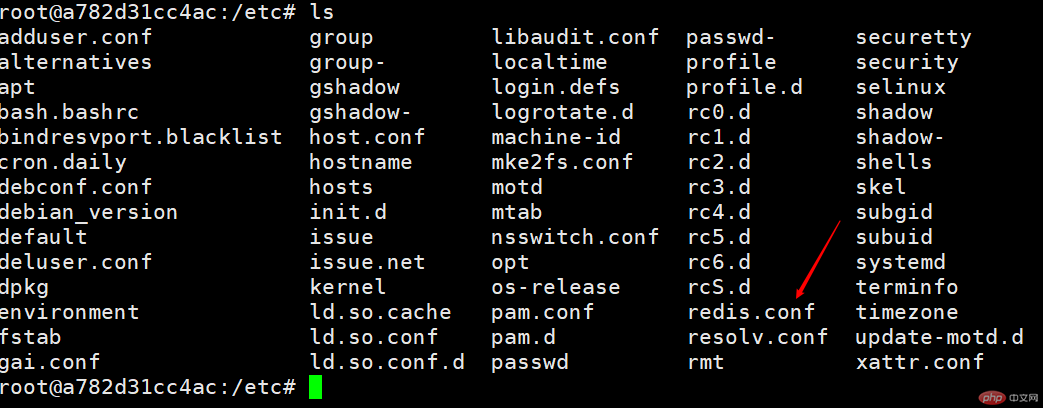

The above is the detailed content of Redis installation guide covers Windows, Linux, Docker. For more information, please follow other related articles on the PHP Chinese website!

Hot AI Tools

Undresser.AI Undress
AI-powered app for creating realistic nude photos

AI Clothes Remover
Online AI tool for removing clothes from photos.

Undress AI Tool
Undress images for free

Clothoff.io
AI clothes remover

AI Hentai Generator
Generate AI Hentai for free.

Hot Article

Hot Tools

Notepad++7.3.1
Easy-to-use and free code editor

SublimeText3 Chinese version
Chinese version, very easy to use

Zend Studio 13.0.1
Powerful PHP integrated development environment

Dreamweaver CS6
Visual web development tools

SublimeText3 Mac version
God-level code editing software (SublimeText3)

Hot Topics
 1378
1378
 52
52
 How to build the redis cluster mode
Apr 10, 2025 pm 10:15 PM
How to build the redis cluster mode
Apr 10, 2025 pm 10:15 PM
Redis cluster mode deploys Redis instances to multiple servers through sharding, improving scalability and availability. The construction steps are as follows: Create odd Redis instances with different ports; Create 3 sentinel instances, monitor Redis instances and failover; configure sentinel configuration files, add monitoring Redis instance information and failover settings; configure Redis instance configuration files, enable cluster mode and specify the cluster information file path; create nodes.conf file, containing information of each Redis instance; start the cluster, execute the create command to create a cluster and specify the number of replicas; log in to the cluster to execute the CLUSTER INFO command to verify the cluster status; make
 How to use the redis command
Apr 10, 2025 pm 08:45 PM
How to use the redis command
Apr 10, 2025 pm 08:45 PM
Using the Redis directive requires the following steps: Open the Redis client. Enter the command (verb key value). Provides the required parameters (varies from instruction to instruction). Press Enter to execute the command. Redis returns a response indicating the result of the operation (usually OK or -ERR).
 How to use single threaded redis
Apr 10, 2025 pm 07:12 PM
How to use single threaded redis
Apr 10, 2025 pm 07:12 PM
Redis uses a single threaded architecture to provide high performance, simplicity, and consistency. It utilizes I/O multiplexing, event loops, non-blocking I/O, and shared memory to improve concurrency, but with limitations of concurrency limitations, single point of failure, and unsuitable for write-intensive workloads.
 How to read the source code of redis
Apr 10, 2025 pm 08:27 PM
How to read the source code of redis
Apr 10, 2025 pm 08:27 PM
The best way to understand Redis source code is to go step by step: get familiar with the basics of Redis. Select a specific module or function as the starting point. Start with the entry point of the module or function and view the code line by line. View the code through the function call chain. Be familiar with the underlying data structures used by Redis. Identify the algorithm used by Redis.
 How to clear redis data
Apr 10, 2025 pm 10:06 PM
How to clear redis data
Apr 10, 2025 pm 10:06 PM
How to clear Redis data: Use the FLUSHALL command to clear all key values. Use the FLUSHDB command to clear the key value of the currently selected database. Use SELECT to switch databases, and then use FLUSHDB to clear multiple databases. Use the DEL command to delete a specific key. Use the redis-cli tool to clear the data.
 How to view all keys in redis
Apr 10, 2025 pm 07:15 PM
How to view all keys in redis
Apr 10, 2025 pm 07:15 PM
To view all keys in Redis, there are three ways: use the KEYS command to return all keys that match the specified pattern; use the SCAN command to iterate over the keys and return a set of keys; use the INFO command to get the total number of keys.
 How to read redis queue
Apr 10, 2025 pm 10:12 PM
How to read redis queue
Apr 10, 2025 pm 10:12 PM
To read a queue from Redis, you need to get the queue name, read the elements using the LPOP command, and process the empty queue. The specific steps are as follows: Get the queue name: name it with the prefix of "queue:" such as "queue:my-queue". Use the LPOP command: Eject the element from the head of the queue and return its value, such as LPOP queue:my-queue. Processing empty queues: If the queue is empty, LPOP returns nil, and you can check whether the queue exists before reading the element.
 How to start the server with redis
Apr 10, 2025 pm 08:12 PM
How to start the server with redis
Apr 10, 2025 pm 08:12 PM
The steps to start a Redis server include: Install Redis according to the operating system. Start the Redis service via redis-server (Linux/macOS) or redis-server.exe (Windows). Use the redis-cli ping (Linux/macOS) or redis-cli.exe ping (Windows) command to check the service status. Use a Redis client, such as redis-cli, Python, or Node.js, to access the server.




